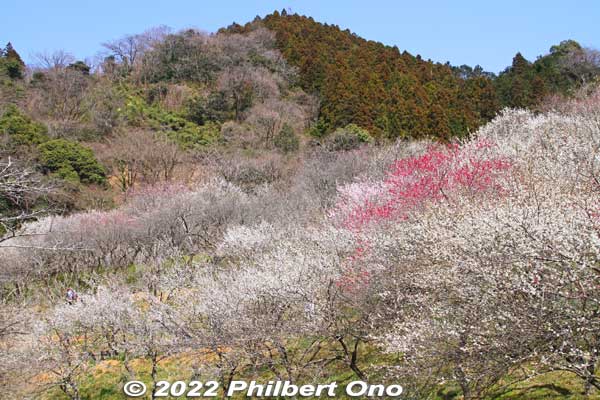
Takao Baigo (高尾梅郷) is a rural area with several plum blossom groves near the famous Mt. Takao in Hachioji, Tokyo. The plum blossoms bloom in March, so if you were too busy to see plum blossoms in central Tokyo during February, you can still see ume blossoms in mountainous western Tokyo. And since it’s a little out of the way, there are less crowds.
Takao Baigo was established in 1964 by a local tourist group. The area happened to have multiple plum groves, so they decided to market them together as a tourist attraction named “Takao Baigo” (Takao Plum Blossom Area) with a total of about 10,000 plum trees. Brilliant idea that has stood the test of time.
Takao Baigo has several ume plum groves along a rural road called Kyu-Koshu Kaido (旧甲州街道) near JR Takao Station (JR Chuo Line) and Keio Line Takaosanguchi Station. Each plum grove has a name and it will take a full day and a lot of walking to see them all. I didn’t see them all, but I did see most of them as listed below.
Takao Baigo’s gated plum groves are open from the first Saturday in March to around March 21 (national holiday). Peak bloom is usually mid-March. Normally, the Takao Baigo Plum Blossom Festival (Ume Matsuri) is held on a weekend featuring food booths and entertainment. However, it was canceled in 2020, 2021, and 2022 due to COVID-19. The plum groves remained open to the public with free admission.
From JR Tokyo Station on the JR Chuo Line, it takes a little over an hour via a direct train to JR Takao Station from where buses can take you to Takao Baigo plum groves or you can walk it. On the Keio Line from Shinjuku to Takaosan-guchi Station, it takes almost an hour.
Kogesawa Bairin (木下沢梅林)
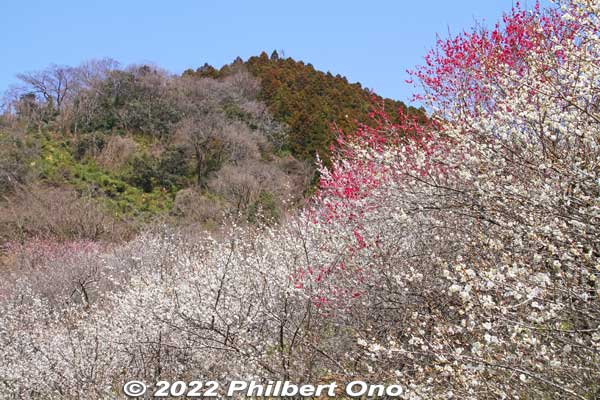
Kogesawa Bairin is by far Takao Baigo’s largest plum grove with 1,400 plum trees on a hillside. (Bairin means “plum grove.”) Mostly white plum blossoms, but a few red and pink flowers too. Very fragrant. There are hillside walking paths along the trees and across the slopes. The top of the hill has a flat, open area perfect for picnickers. Great place for lunch if you brought your own food. The mountains in the background make the flowers photogenic.
Kogesawa Bairin is open to the public only when the flowers are in bloom in March (10 am–4 pm). Otherwise, it’s closed to the public (surrounded by a fence). Wearing a mask and using hand sanitizer at the guarded entrance is required. Restrooms are on the top of the hill.

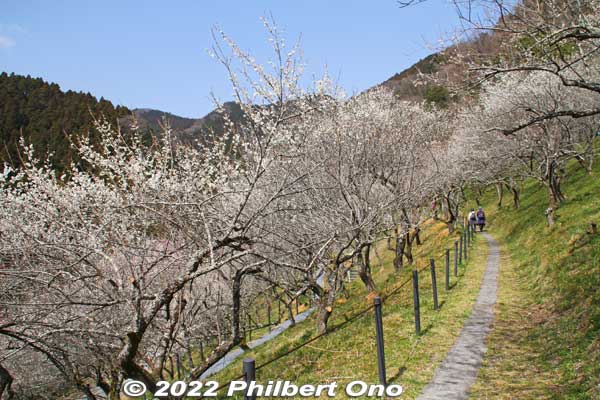
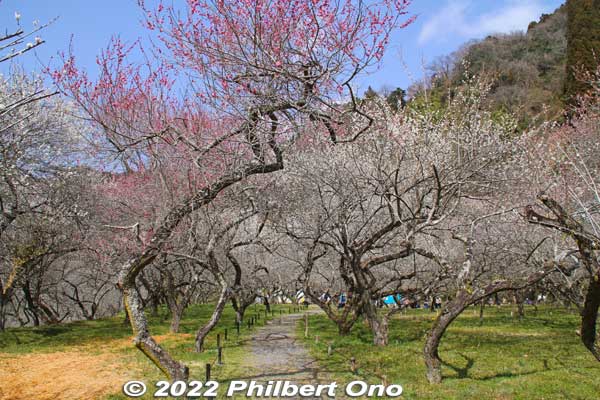
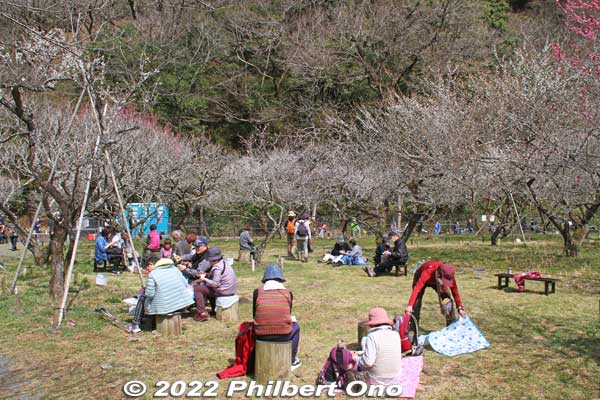
The top of Kogesawa Bairin plum grove is flat and covered with plum trees except for a small picnic area with benches and tree stumps to sit on.
Tree branches seem to grow in fantastic shapes in random directions, but the tree amazingly maintains its balance.
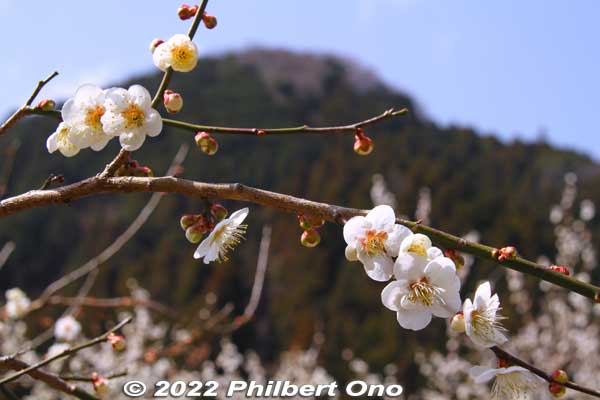
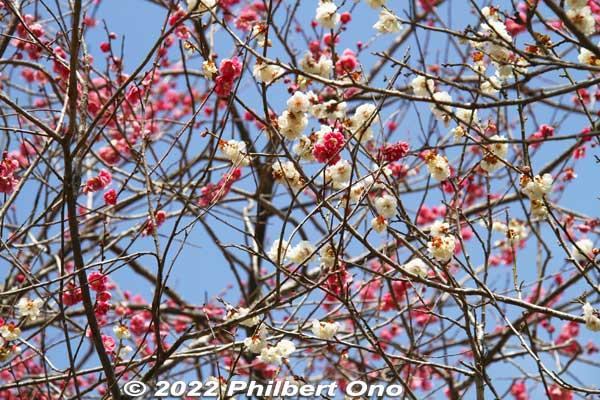
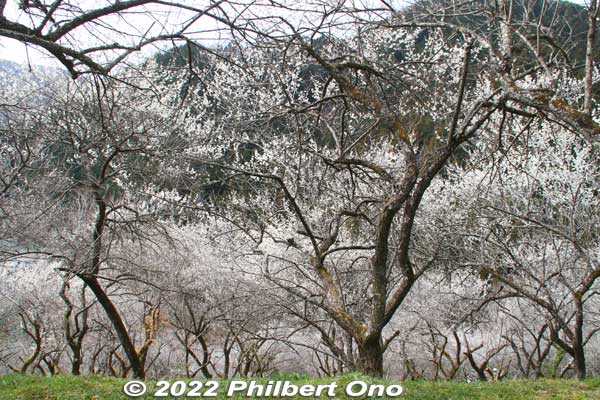
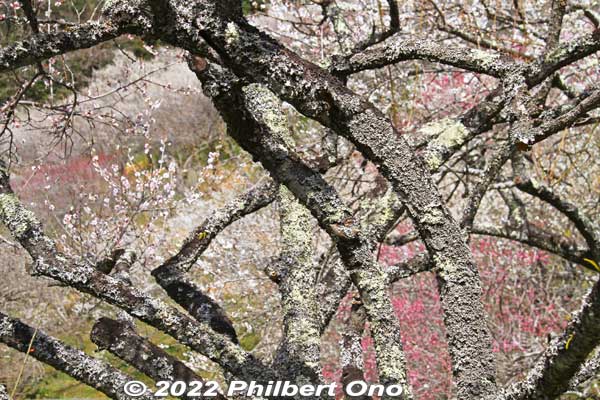
Plum trees also have lichens (Parmotrema tinctorum ウメノキゴケ) growing on the trunk and branches. These lichens form on plum trees in rural areas. We don’t see them on plum trees in the city because exhaust fumes from vehicles kill them. So if you see these lichens on plum trees, it means the surrounding environment is very clean.
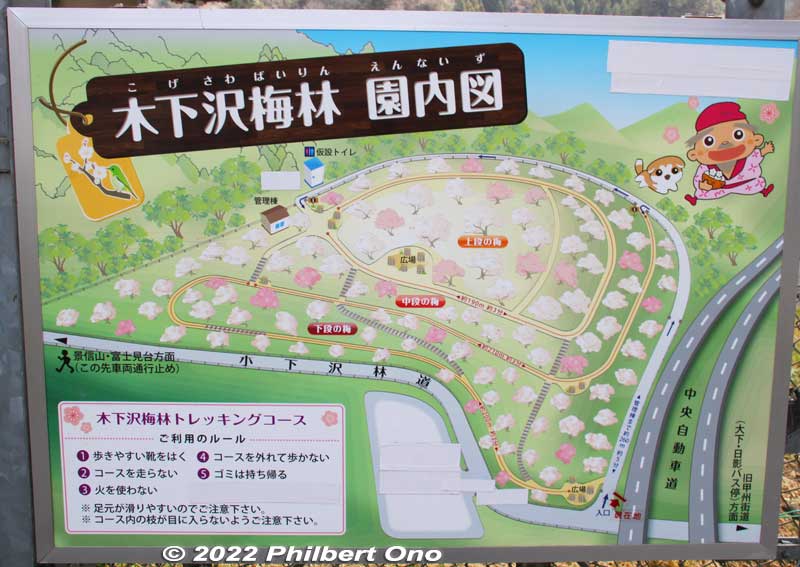
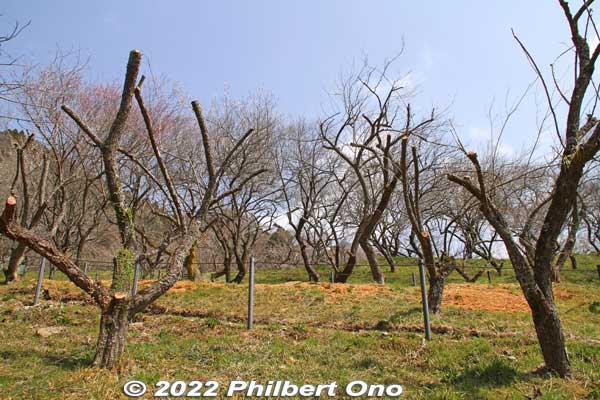
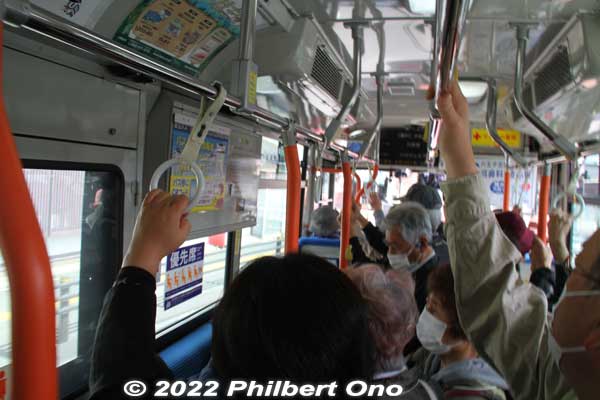
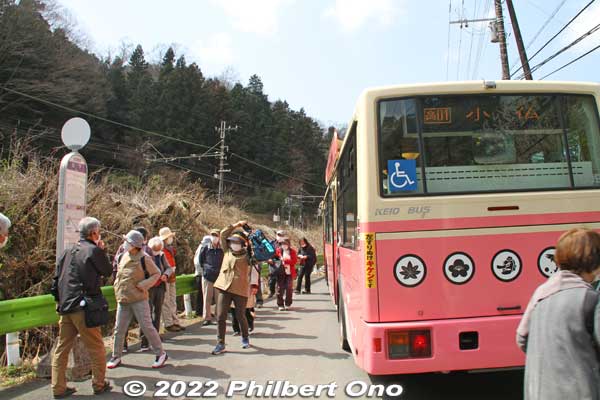
Kogesawa Bairin is on the far end of Takao Baigo. It seems most visitors take the bus from the train station to see Kogesawa Bairin first, then work their way back toward the train station (about 4 or 5 km away). That’s what I did.
From JR Takao Station North Exit (Kitaguchi), take the bus going to Kobotoke (小仏) and get off at Oshimo (大下) which is nearest to Kogesawa Bairin. Then it’s a short walk to Kogesawa Bairin.
Note that Kogesawa Bairin gates open at 10:00 am, and buses run only once an hour on weekdays and three times an hour on weekends. My bus was packed on a weekday morning. During peak hours, they have two buses running at the same time. (Check the Keio bus schedule.)
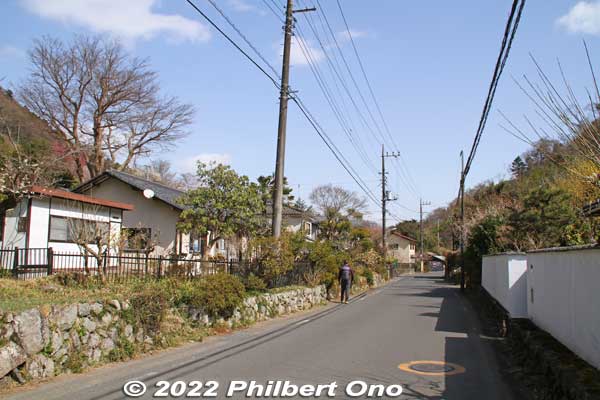
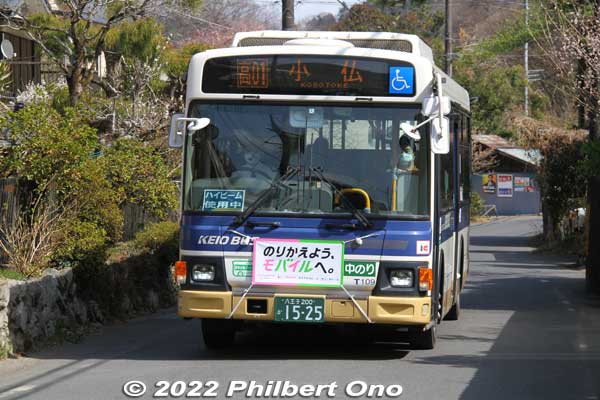
After Kogesawa Bairin, you can walk back along on Kyu-Koshu Kaido road (flat terrain) to see more plum groves. It’s a quiet, rural, residential area along a small river. As you keep walking, you see plum trees here and there.
The road also has bus stops for buses going back to the train station if you’re tired of walking. The bus goes to JR Takao Station or Keio Line Takaosan-guchi Station.
Surusashi Bairin (するさし梅林)
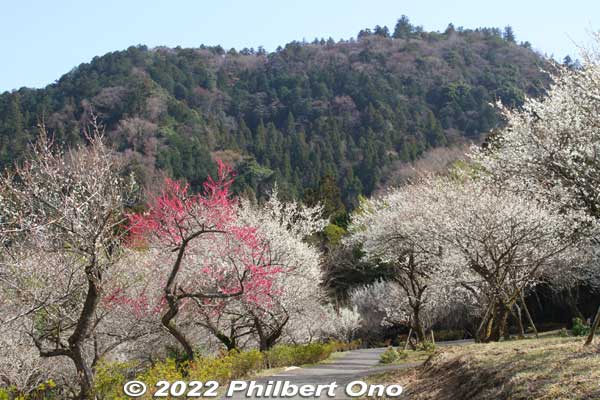
After walking for some minutes from Kogesawa Bairin, the next plum grove was Surusashi Bairin. This is a flat, rectangular, park-like area with a walking path in the middle and a playground fringed with plum trees. Looks to be Takao Baigo’s second largest plum grove, at least in land area. It is also gated and open only when the plum blossoms bloom in March.
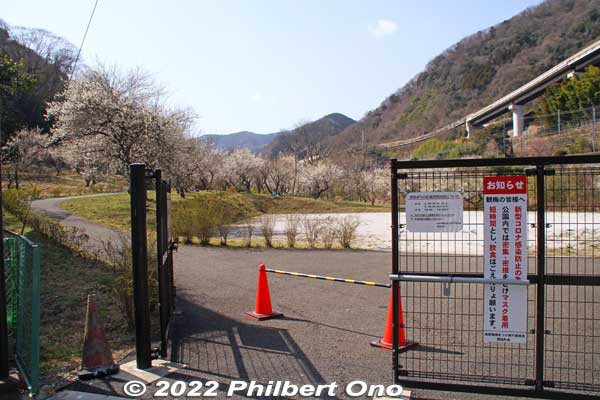
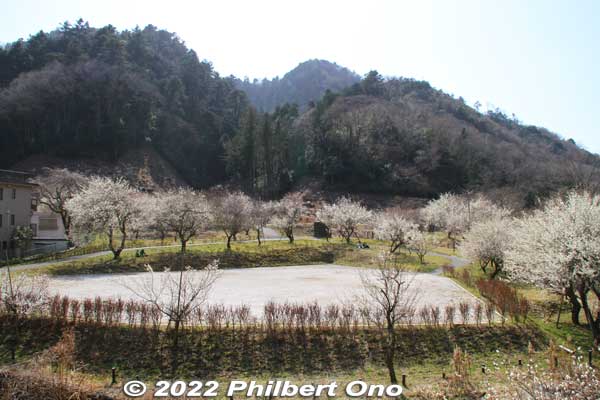
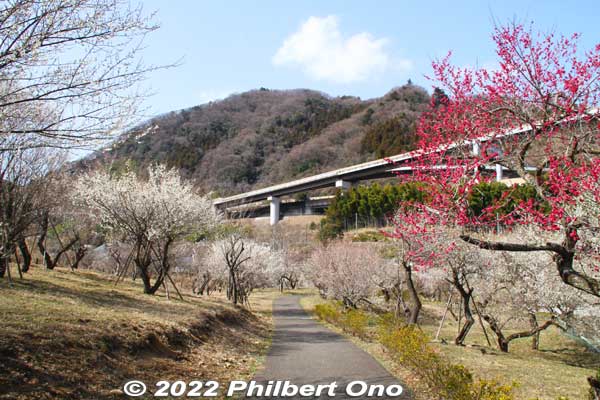
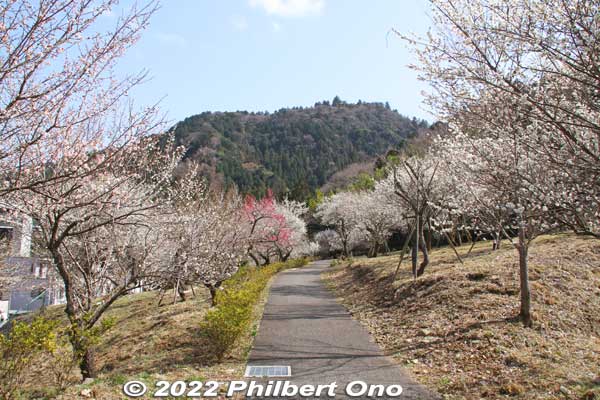
Rather than a patch of trees, Surusashi Bairin has lines of plum trees along the walking path. Very few people even during peak bloom.
Yunohana Bairin (湯の花梅林)
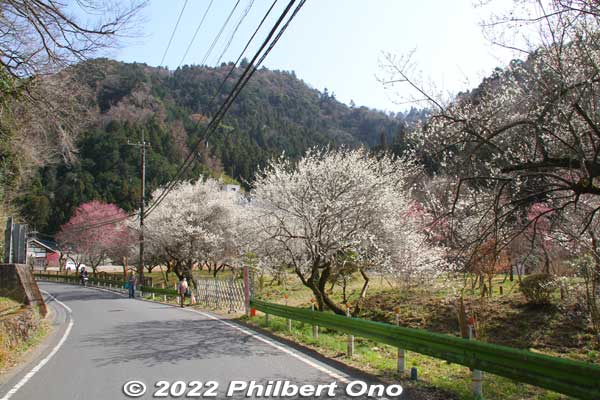
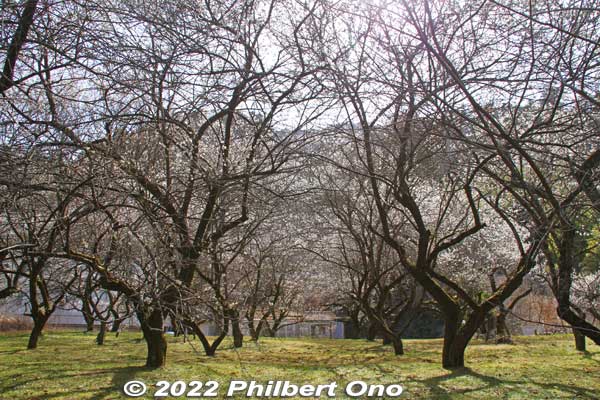
Walked further along the road for the next grove named Yunohana Bairin (湯の花梅林). The public cannot enter this grove, so you just see it from the road. It’s flat and just another patch of eye candy along the road.
Takao Ume-no-Sato Machi no Hiroba (高尾梅の郷 まちの広場)
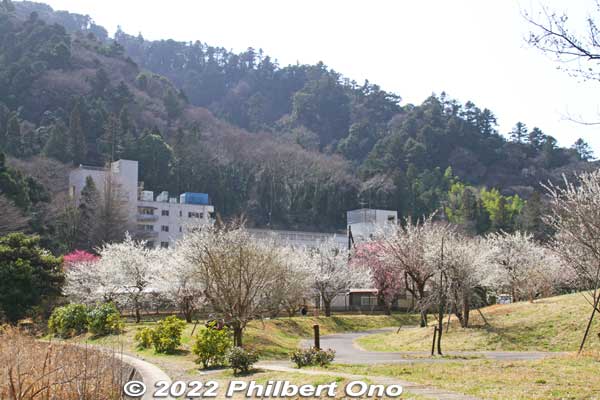
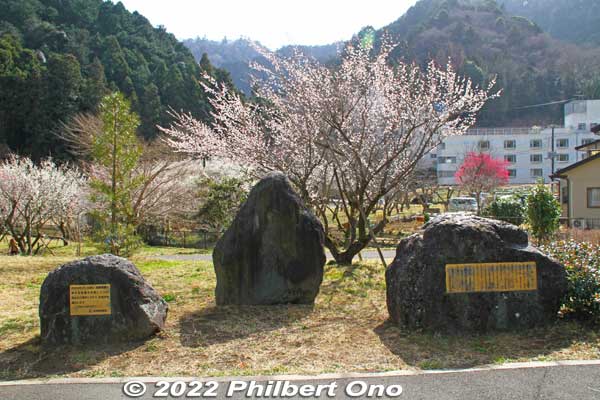
Takao Ume-no-Sato Machi no Hiroba is a small patch of plum blossoms in a public park below the expressway and next to the river. It serves as a picnic area and rest stop with restrooms. The Takao Baigo stone monument is also here.
Tenjin Bairin (天神梅林)
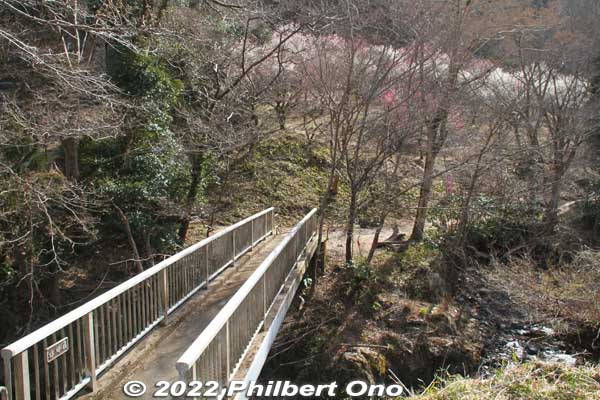
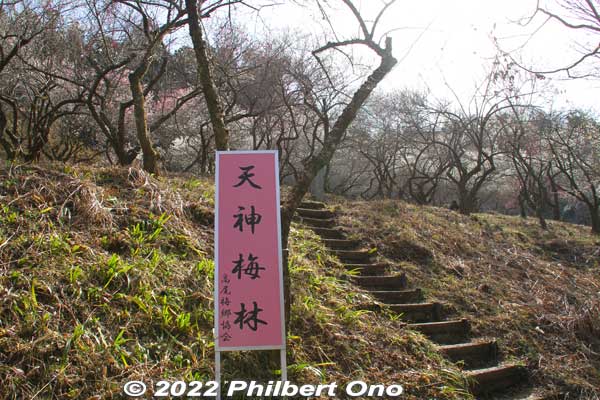
The next plum grove called Tenjin Bairin is not so visible from Kyu-Koshu Kaido road since it’s largely obstructed by trees. But there’s a sign and bridge to the hillside grove. Go up the steps and climb up to the hilltop where there’s the small Takao Tenmangu Shrine (高尾天満宮).
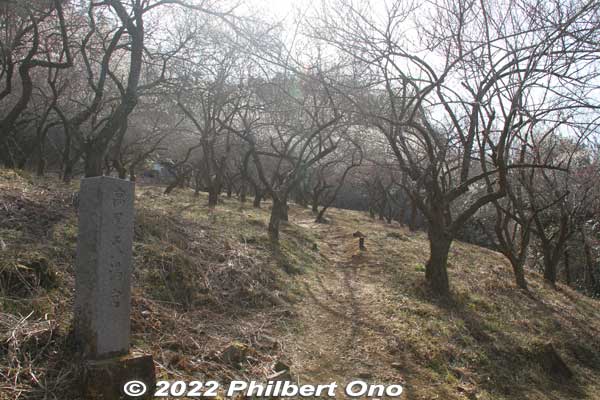
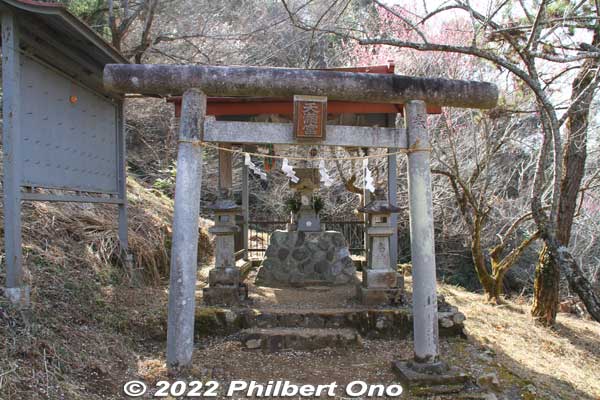
Tenmangu (or Tenjin) shrines are dedicated to famous Japanese scholar Sugawara Michizane (845–903) deified as Tenjin, the god of learning and scholarship. People in this Takao area have been worshipping Tenjin for centuries.
Plum blossoms are associated with Sugawara Michizane because he once wrote a poem for his beloved plum blossoms that “flew through the air” from Kyoto to follow him when he was exiled to Dazaifu, Fukuoka. So most all Tenmangu/Tenjin shrines (thousands of them) will have plum blossoms. (Dazaifu Tenmangu Shrine in Dazaifu, Fukuoka is the headquarters Tenmangu shrine where Michizane is buried.)
Tenjin Bairin is also along the walking path dubbed the Takao Baigo Walking Trail (高尾梅郷遊歩道) that goes through a small forest along the small Kobotoke River (小仏川).
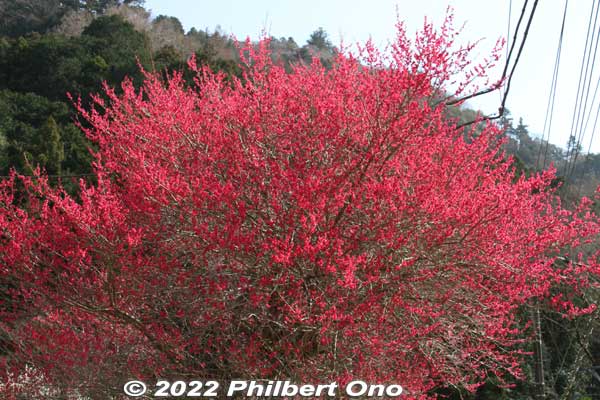
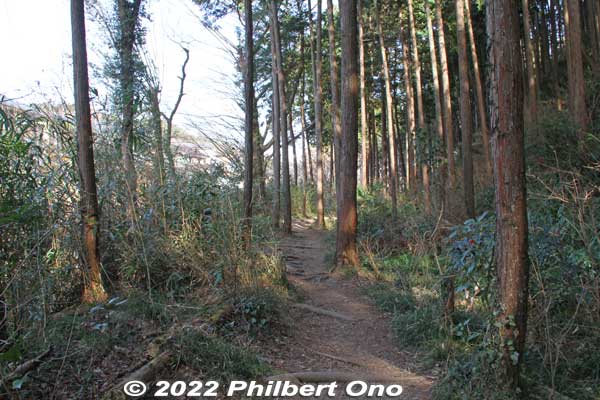
Yuhodo Bairin (遊歩道梅林)
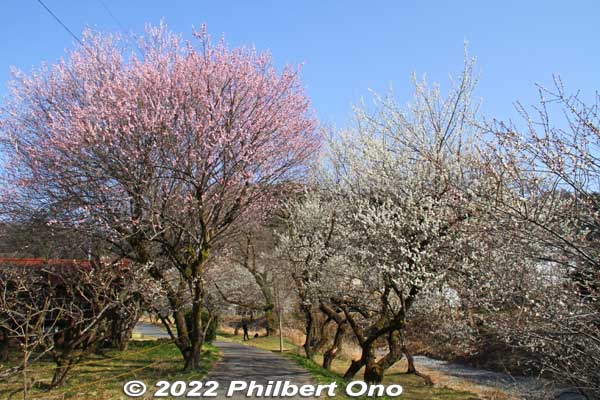
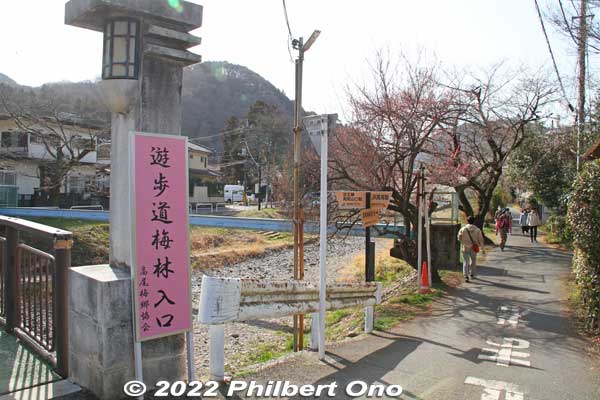
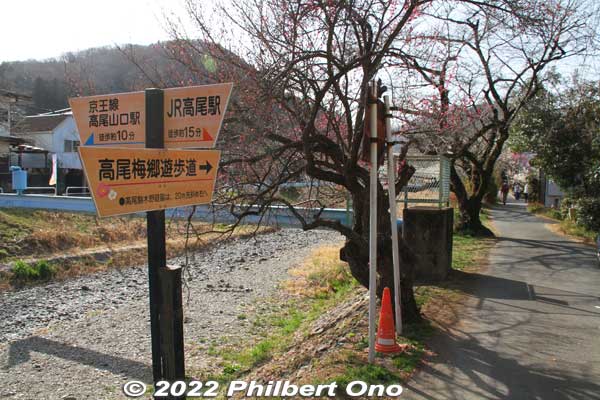
Yuhodo Bairin are plum blossoms along the Takao Baigo Walking Trail (高尾梅郷遊歩道) that starts here at the entrance of Takao Baigo along Kobotoke River. From the train station, you can walk 15 min. to this walking trail and proceed toward Kogesawa Bairin at the far end about 5 km away (90 min. walk). However, as I mentioned earlier, most people first take the bus from the train station to Kogesawa Bairin, then walk or ride back.
So when you tour Takao Baigo, you can walk on this walking trail part of the way and on the paved Kyu-Koshu Kaido road.
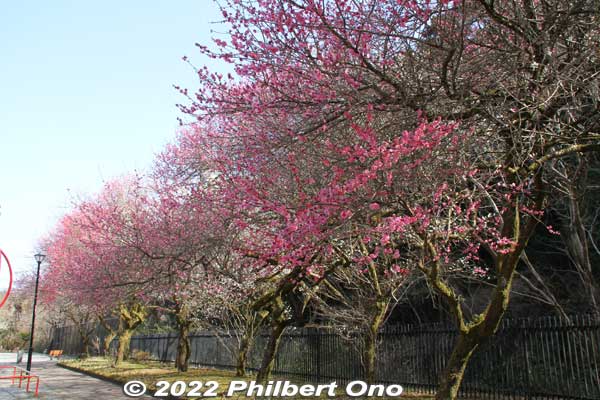
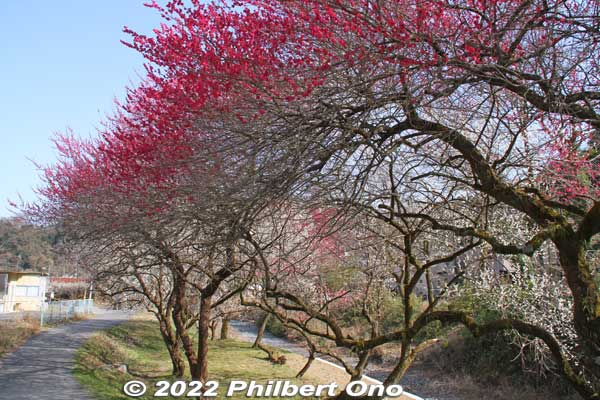
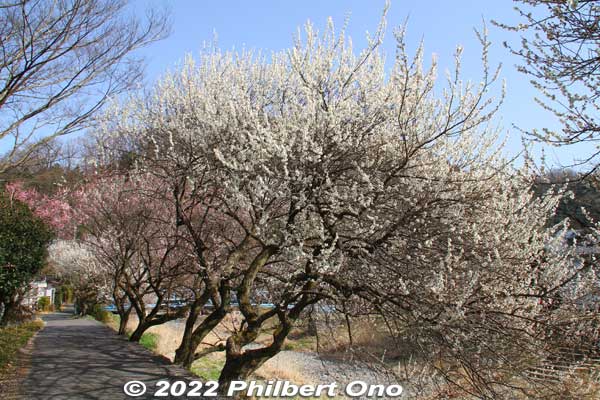
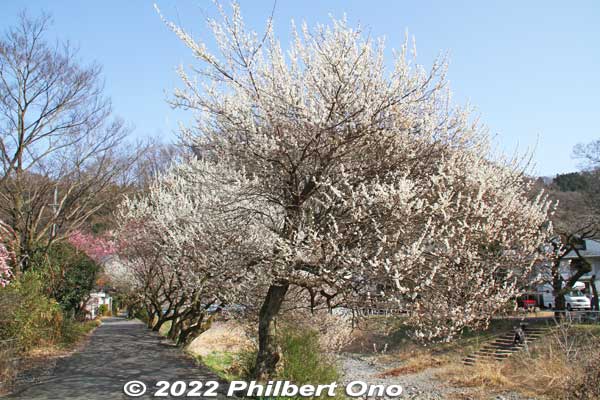
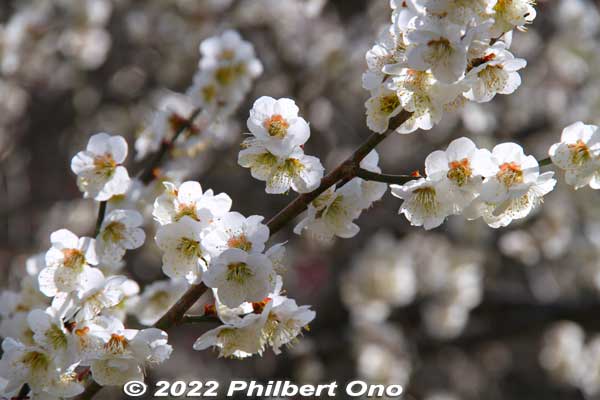
I didn’t see all of Takao Baigo’s plum groves. (Too much walking in one day.) Missed Arai Bairin (荒井梅林) and saw only a glimpse of Sekisho Bairin (関所梅林) when we passed by it on the bus (near Komagino bus stop 駒木野). But I had my fill for the day.
More photos of Takao Baigo here.
Getting to Takao Baigo
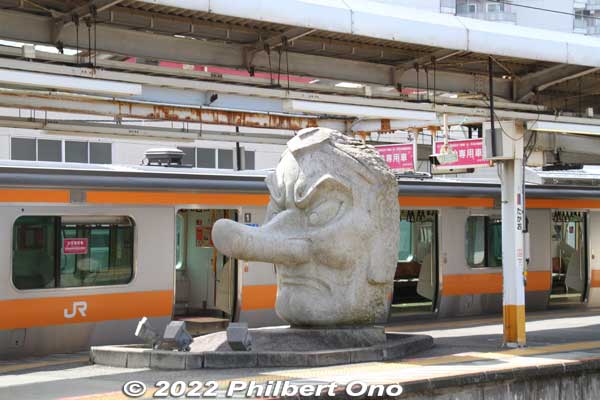

Nearest train station is JR Takao Station (JR Chuo Line) and Keio Line Takaosanguchi Station (from Shinjuku). Then take a bus from the train station or walk. Keio Bus schedule from JR Takao Station here.
On the JR Takao Station train platform is a 2.4-meter high tengu goblin mask sculpture. The nose is 1.2 meter long. A local symbol installed in 1978. Now an object of prayer for safe railway transportation. Mt. Takao, which has long been a sacred mountain, supposed to be where one of the major tengu dwells. Priests from Yakuoin Temple on Mt. Takao perform prayers at the sculpture.
The Google map below shows only an approximate walking path between JR Takao Station and Kogesawa Bairin (5 km). It doesn’t show the entire walking path.

FYI

Hachioji manhole cover shows another local symbol, the Hachioji Kuruma Ningyo (八王子車人形). A unique offshoot of bunraku puppetry, Hachioji Kuruma Ningyo is traditional puppetry founded and practiced by a troupe based in Hachioji. It is recognized as a National Important Intangible Folk Cultural Property. Although kuruma ningyo literally means “dolls on wheels,” the puppets are not on wheels. The puppeteers are.
The manhole depicts a Sanbaso dancer puppet (三番叟) and a puppeteer behind it (dressed in black as kurogo). Sanbaso is a well-known dancer in Noh and kabuki. He comes from a Noh prayer dance called Okina (翁) dating from the 14th century as a religious ritual. Okina has three dancers praying for longevity, peace, endless joy, prosperity, and rich harvests. Sanbaso is the third dancer in Okina who prays for a rich harvest. Notice that his right hand holds a small tree of bells shaped like a rice plant. His cap has a red sun.
Sanbaso performs on auspicious occasions like New Year’s and at the beginning of the day’s Noh, kabuki, or Hachoji Kuruma Ningyo puppetry plays.
Hachioji Kuruma Ningyo puppeteers actually sit on a small, box-like wheeled cart while they operate the puppets. Unlike bunraku where three puppeteers operate one puppet, only one puppeteer operates a Kuruma Ningyo puppet while sitting and moving around on a box cart. The puppet’s feet are attached to the puppeteer’s feet. This video shows exactly what it is: https://youtu.be/tvs8lbqihUg


